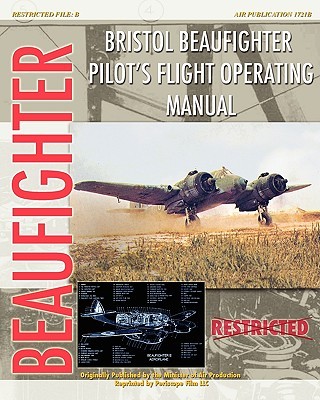
- We will send in 10–14 business days.
- Author: Minister Of Aircraft Production
- Publisher: Periscope Film LLC
- Year: 2009
- Pages: 106
- ISBN-10: 1935327747
- ISBN-13: 9781935327745
- Format: 20.3 x 25.4 x 0.6 cm, minkšti viršeliai
- Language: English
- SAVE -10% with code: EXTRA
Bristol Beaufighter Pilot's Flight Operating Instructions (e-book) (used book) | bookbook.eu
Reviews
Description
Known as the "Beau", Bristol's Beaufighter was based on the design of the Beaufort torpedo bomber. Heavy and slow by fighter standards, it nevertheless had a long career as a fighter, fighter bomber and eventually replaced the Beaufort as a torpedo bomber. Equipped with radar in its nose, it flew over the skies of the United Kingdom in 1941 as a night-fighter and proved a strong counter to the Luftwaffe. Beginning in 1942, the Beau flew in the Mediterranean where it proved very effective against shipping, aircraft and ground targets. The torpedo-carrying variant "Torbeau", TF Mk. X, made its first successful attacks in April of 1943, sinking two merchant ships off Norway. The North Coates Strike Wing of Coastal Command used Torbeaus and Beaus in concert and accounted for over 117 enemy vessels, nearly half of all enemy shipping sunk by strike wings in 1942-45. The Beau also flew in the Pacific and CBI Theaters, attacking Japanese supply lines and shipping. Royal Australian Air Forces units flew an Australian-produced variant, most notably in the Battle of the Bismarck Sea where they sank twelve enemy ships. Originally printed by the Minister of Air Production and Bristol, this pilot's flight operating instruction manual taught pilot's everything they needed to know before entering the cockpit. Includes instructions for both the Beaufighter II and TF X models.
EXTRA 10 % discount with code: EXTRA
The promotion ends in 22d.06:06:05
The discount code is valid when purchasing from 10 €. Discounts do not stack.
- Author: Minister Of Aircraft Production
- Publisher: Periscope Film LLC
- Year: 2009
- Pages: 106
- ISBN-10: 1935327747
- ISBN-13: 9781935327745
- Format: 20.3 x 25.4 x 0.6 cm, minkšti viršeliai
- Language: English English
Known as the "Beau", Bristol's Beaufighter was based on the design of the Beaufort torpedo bomber. Heavy and slow by fighter standards, it nevertheless had a long career as a fighter, fighter bomber and eventually replaced the Beaufort as a torpedo bomber. Equipped with radar in its nose, it flew over the skies of the United Kingdom in 1941 as a night-fighter and proved a strong counter to the Luftwaffe. Beginning in 1942, the Beau flew in the Mediterranean where it proved very effective against shipping, aircraft and ground targets. The torpedo-carrying variant "Torbeau", TF Mk. X, made its first successful attacks in April of 1943, sinking two merchant ships off Norway. The North Coates Strike Wing of Coastal Command used Torbeaus and Beaus in concert and accounted for over 117 enemy vessels, nearly half of all enemy shipping sunk by strike wings in 1942-45. The Beau also flew in the Pacific and CBI Theaters, attacking Japanese supply lines and shipping. Royal Australian Air Forces units flew an Australian-produced variant, most notably in the Battle of the Bismarck Sea where they sank twelve enemy ships. Originally printed by the Minister of Air Production and Bristol, this pilot's flight operating instruction manual taught pilot's everything they needed to know before entering the cockpit. Includes instructions for both the Beaufighter II and TF X models.


Reviews